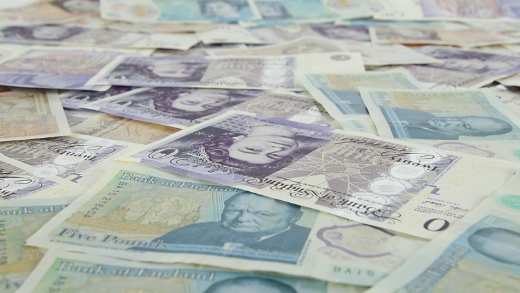Tax is a word that can make people shudder. But when it comes to your retirement, pensions are one of the most tax-efficient ways of saving. With a pension, like a Self-Invested Personal Pension (SIPP), you'll get tax relief. How much will depend on your personal circumstances.
The value of a SIPP can fall as well as rise, so you could get back less than the amount that's been put in.

Invest for your pension, your way
Our Self-Invested Personal Pension puts you in control
Capital at risk
What is pension tax relief and how could it increase the value of my SIPP?
The UK government realises that a state pension alone may not be enough to support a comfortable retirement. So, the government gives tax relief on pension contributions to encourage people to save for their retirement. This tax relief is not exclusive to a SIPP pension and is automatically applied when you pay into other pensions too.
The amount you can get on your pension contributions depends on how much you earn and on your income tax rate.
Everyone gets tax relief of 20% on their eligible contributions. This means that for every £80 you put into your pension, the government will throw in another £20, bringing the total contribution to £100.
But if you pay tax at the higher or additional rate you may be able to claim more through your self-assessment. The tax relief you get depends on your personal circumstances. If you have any questions, you should chat to a financial adviser.
When is tax relief added to my SIPP?
It’s added automatically by your pension provider when you add to your SIPP. For example, if you pay £1,000 into your SIPP, your pension provider will add £250 in tax relief, bringing your total to £1,250.
If you’re a higher or additional rate taxpayer, you’ll need to claim your additional tax relief through your self-assessment tax return. Your pension provider will give you a statement showing how much tax relief you’ve had.
What is the annual allowance for my pensions, including my SIPP?
There’s a limit on how much you and your employer can pay into your pensions each year before you have to pay a tax charge. This is known as the annual allowance and it’s currently £60,000, including any tax relief. So, you’ll normally pay tax on pension savings above this.
If you're a high earner your annual allowance will go down gradually to as little as £10,000 if your income is over £200,000. This is called the tapered annual allowance.
The government can change the limit at any time, so keep an eye on those budget announcements.
Is there a Carry Forward I can use?
This allows you to make pension contributions into any pension above your annual allowance without paying an extra tax charge.
Carry Forward works by letting you make use of the times in the last three years when you haven’t used your annual allowance, as long as you had a pension at the time.
What are the Carry Forward rules?
- You must’ve reached your annual allowance in the tax year you want to carry forward in.
- You must’ve been a member of a UK-registered pension scheme in each of the tax years that you want to carry forward.
- You can only go back three years and can only use an allowance once.
- If you’ve a tapered annual allowance, then you measure your unused annual allowance against the tapered allowance. This only affects high earners with a net income over £200,000.
What’s the money purchase annual allowance (MPAA)?
If you've taken flexible benefits from your personal or other money purchase pension, either as a lump sum or income drawdown your annual allowance is lower - currently £10,000. This is called the Money Purchase Annual Allowance (MPAA). The provider that paid your benefits should have told you if you are affected by the MPAA.
I’m a non-earner. How much can I pay into a personal pension, including a SIPP?
If you’re not earning, you’re not paying tax. But you can still make pension contributions up to £3,600 a year, which includes 20% tax relief. You can also pay the same amount into a pension for a child, giving them a leg up with their finances.
What is the lump sum allowance and lump sum and death benefit allowance?
The lump sum allowance is how much you can be paid from all your pensions tax-free during your lifetime and in 2024/2025 it’s £268,275. The lump sum and death benefit allowance is the tax-free limit for payments during your lifetime and on death – it’s currently £1,073,100. UK Income Tax is payable on any benefits taken above these limits.
Don’t forget:
A few things to bear in mind before you move forward with saving in a SIPP:
- You can’t access money paid into a pension before you reach 55 (57 from 6 April 2028 unless you have a protected pension age).
- You might pay UK Income Tax on 75% of the money withdrawn from a pension.
- If you don’t earn an income, you can still save up to £3,600 into a pension each year (you pay £2,880 with the government topping up a further £720).
- There’s no maximum age limit for a pension, but you can't make further contributions over the age of 75.
- As always, if you’re not sure, it’s always a good idea to a financial adviser. You may have to pay for this advice.
- If you don’t have a financial adviser, you can find one near you at unbiased.co.uk.















